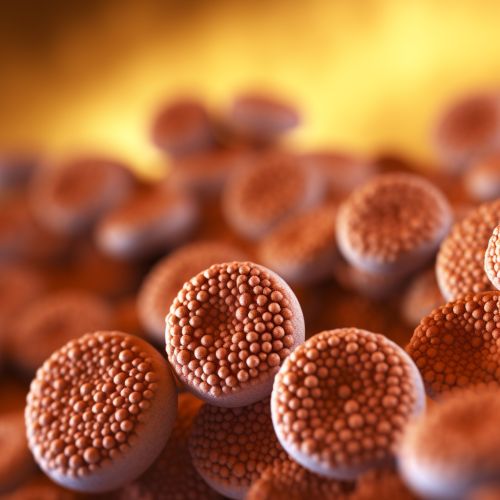Ethanol fermentation
Introduction
Ethanol fermentation, also known as alcoholic fermentation, is a biological process that converts sugars such as glucose, fructose, and sucrose into cellular energy, producing ethanol and carbon dioxide as by-products. This process is central to the production of alcoholic beverages and bread. The process is carried out by yeasts and some types of bacteria.


Biochemical Process
The biochemical process of ethanol fermentation involves the breakdown of glucose (C6H12O6) into ethanol (C2H5OH) and carbon dioxide (CO2). This process occurs in two stages: glycolysis and fermentation.
Glycolysis
In the first stage, glycolysis, one molecule of glucose, a six-carbon sugar, is converted into two molecules of pyruvic acid, a three-carbon compound. This process occurs in the cytoplasm of the cell and does not require oxygen (anaerobic). It produces a small amount of ATP (adenosine triphosphate), which provides energy for cellular functions.
Fermentation
In the second stage, fermentation, the pyruvic acid is converted into ethanol and carbon dioxide. This process also occurs in the cytoplasm and is anaerobic. The carbon dioxide produced in this process is what causes bread to rise and gives sparkling wine its bubbles.
Industrial Applications
Ethanol fermentation has a wide range of industrial applications, including the production of alcoholic beverages, bread, and biofuels.
Alcoholic Beverages
The production of alcoholic beverages is one of the oldest and most common applications of ethanol fermentation. Yeasts, primarily Saccharomyces cerevisiae, are used to ferment sugars in fruits or grains to produce ethanol. The type of sugar and yeast used, as well as the fermentation conditions, can significantly affect the taste and alcohol content of the beverage.
Bread Production
In bread production, ethanol fermentation is used to leaven dough. The yeast ferments the sugars in the dough, producing carbon dioxide and ethanol. The carbon dioxide gets trapped in the dough, causing it to rise. The ethanol evaporates during baking, contributing to the bread's flavor.
Biofuels
Ethanol fermentation is also used in the production of biofuels. In this process, sugars from plants such as corn or sugarcane are fermented to produce ethanol, which can be used as a renewable fuel source. This process is a significant part of efforts to reduce reliance on fossil fuels and mitigate climate change.
Microorganisms Involved
Several microorganisms are capable of carrying out ethanol fermentation, including yeasts and bacteria. The most commonly used yeast is Saccharomyces cerevisiae, also known as baker's or brewer's yeast. Certain bacteria, such as Zymomonas mobilis, can also perform ethanol fermentation and are being explored for their potential in industrial applications.
Challenges and Future Directions
While ethanol fermentation is a well-established process, it is not without its challenges. These include the production of unwanted by-products, the need for costly sugar feedstocks, and the energy-intensive nature of the process. Current research is focused on addressing these challenges and improving the efficiency and sustainability of ethanol fermentation.
